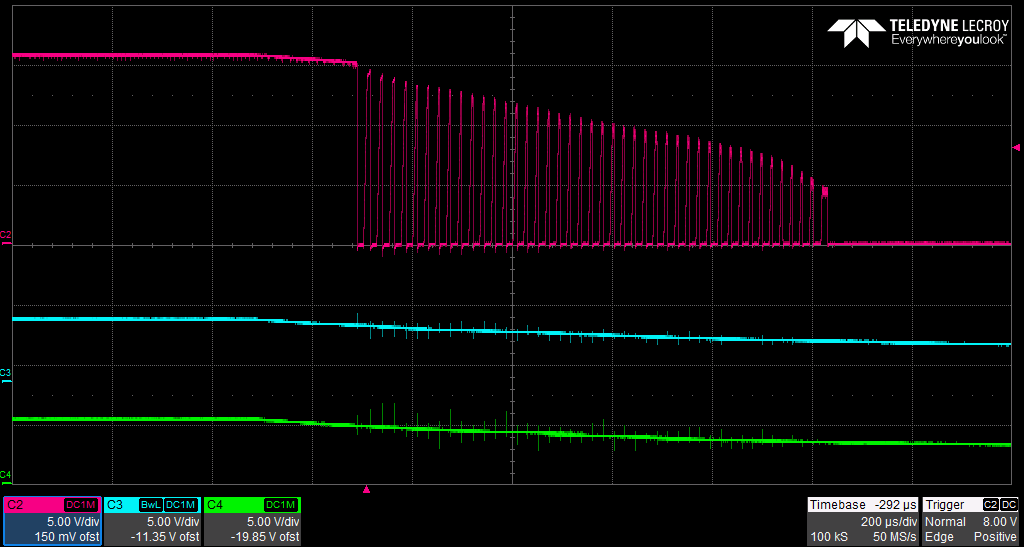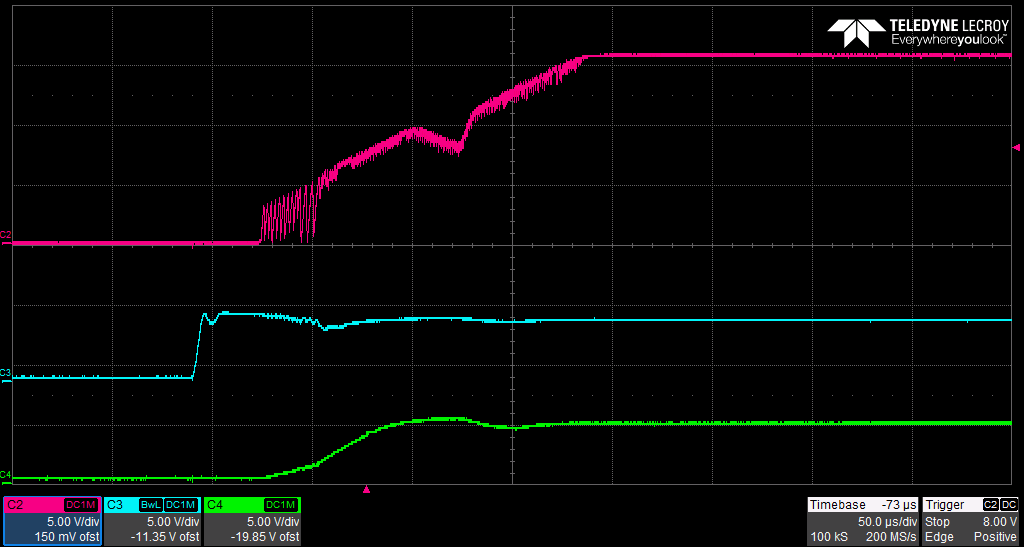Other Parts Discussed in Thread: TPS2410
Hello,
I have two standard circuits (I think) per the datasheet for this TPS2412 in parallel. Both are supposed to pass 5V to the PCB. One 5V circuit passes USB 5V. The other passes a power supply 5V. Why would the gate line be oscillating? Pics attached.
Power off wave form of one TPS2412 circuit
Powering on of the other TPS2412 circuit
The pink line, ch2, is the gate of the N-channel mosfet.





